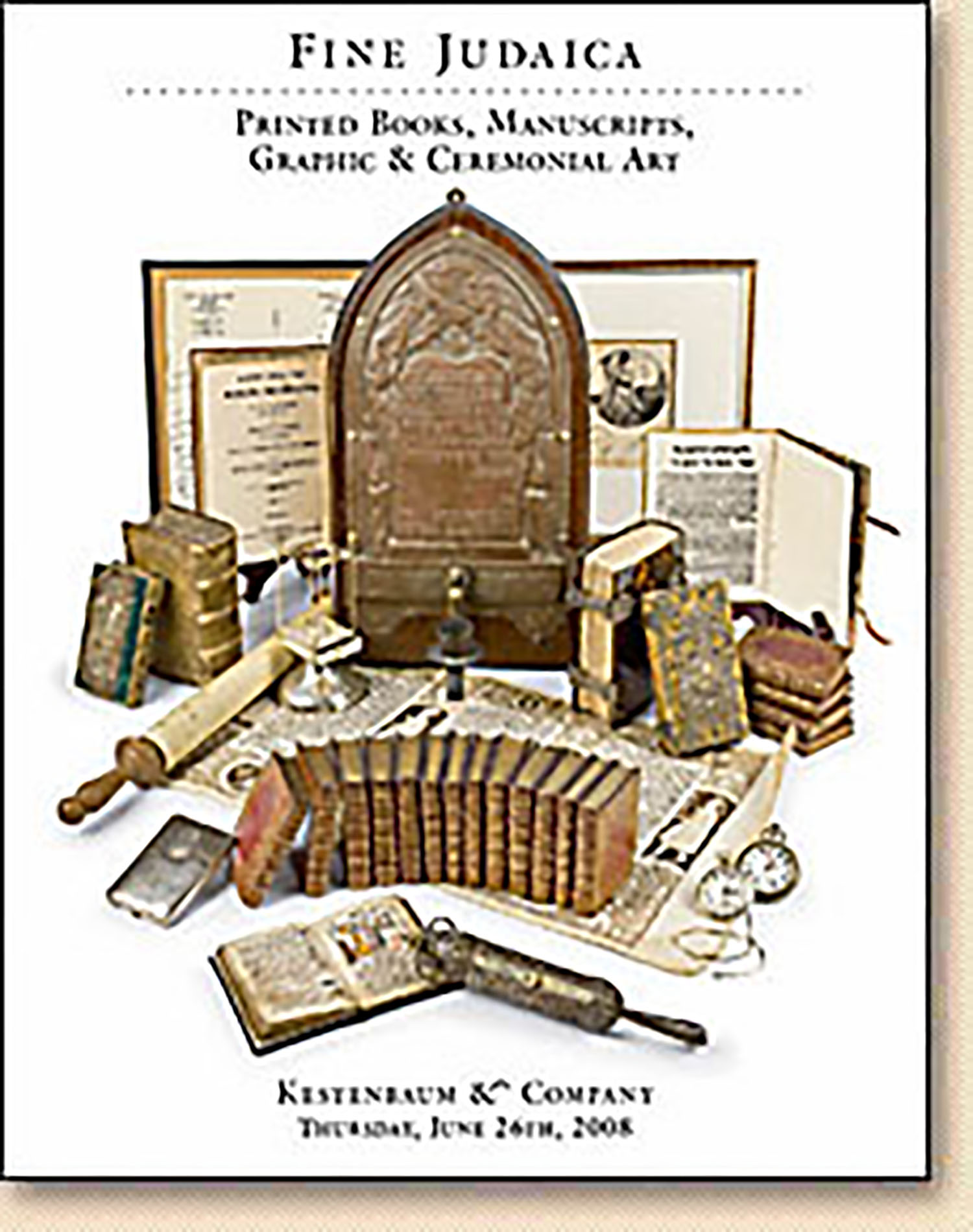MEGILATH ESTHER.

AUCTION 40 |
Thursday, June 26th,
2008 at 1:00
Fine Judaica: Printed Books, Manuscripts, Autograph Letters, Graphic & Ceremonial Art
Lot 284
MEGILATH ESTHER.
(Italy): (1748)
Est: $100,000 - $150,000
PRICE REALIZED $95,000
A MAGNIFICENT 18th-CENTURY ILLUSTRATED ESTHER SCROLL ACCOMPLISHED WITH A HIGH DEGREE OF ARTISTRY. RECENTLY UNEARTHED AND NOT PREVIOUSLY SEEN AT AUCTION.
Context and Comparables:
The form and layout of this Megilah is reminiscent of the engraved Megiloth produced by artist Salom Italia in the 16th-century (see C. Roth, Jewish Art, cols. 513-14). Another example of Italia's exemplary work is the engraved Megilah in the Jewish Museum, New York (see Kleeblatt and Mann, Treasues of the Jewish Museum, pp. 64-5).
Engraver Salom Italia (1619-after 1655) was born into a family of printers in Mantua. After spending some time in the Venetian States, he gravitated to Amsterdam, by that time a center of Jewish printing. In both Megiloth by Italia - as in our own Megilah - columns of text are separated by figures from the Book of Esther, whether they be
heroes and heroines, or villains and villainesses.
Remarkably similar to our Megilah in terms of basic graphic design, is the illustrated Megilah by the scribe Michael Judah Léon (Amsterdam, 1643). Again, columns are separated by figures, while scenes from the Biblical story are depicted in small cartouches below (see M. Keen, Jewish Ritual Art in the Victoria & Albert Museum, p. 51).
Notwithstanding, the artist of our Megilah is clearly the same master who created the 18th-century Italian Esther Scroll from the Stieglitz Collection, presently in the Israel Museum, Jerusalem (see C. Benjamin, The Stieglitz Collection: Masterpieces of Jewish Art pp. 264-7).
Another Megilah by the very same artist, was in the Roth Collection, Oxford. Similarities include the curly-maned lions whose hindquarters are separated by a drooping floral motif along the lower register and how each column of the Megilah is encased within a panel. Intervening between one text panel and the next are the seven royal chamberlains: Mehuman, Bizetha, Harvona, Bigtha, Avagtha, Zeithar and Charcas (Esther 1: 10). At top are cameo portraits of other minor characters from the Megilah: Sha'ashgaz and Bigthan (Esther 2:14, 21), all vignettes are captioned using Rashi script. The figures are somewhat stereotyped, however the elevation of such minor characters to cameo roles may have been intended for comical effect. Roth alludes to another example of this type executed by Polish artist Aryeh Loeb ben Daniel in Venice in 1748 - the very year our own Megilah was gifted (see above.) Roth's asumption that the prototype for this design is Provencal appears gratuitous. The fact that Roth discovered his own specimen in the South of France hardly proves that the genre originated in the Jewish communities of the Comtat Venaissin (see Roth, Jewish Art (1961), pp. 434-5).
In conclusion, although our scroll has no colophon, we may safely assume that the artist is either Daniel, son of Mordechai of Goray, or morely likely his son, Aryeh Leib - both father and son were active in Italy, it is known that the latter lived in the 1740s in Brissighella and Venice. For other examples of scrolls by the artist Aryeh Leib, see M. Metzger, The Earliest Engraved Italian Megilloth, in: Bulletin of the John Rylands Library 48:2 (Spring 1966), pp. 406-32
